The Huawei MateBook 16 Review, Powered by AMD Ryzen 7 5800H: Ecosystem Plus
by Dr. Ian Cutress on October 20, 2021 8:00 AM EST- Posted in
- Laptops
- AMD
- Huawei
- Matebook
- Ryzen
- Zen 3
- MateBook 16
- Huawei Share
- Ryzen 7 5800H
Graphics Performance: Vega 8 in Mobile
The world of mobile graphics is somewhat of a wild west right now. Both AMD and Intel equip all their mobile processors with, at least physically, the same configuration from top to bottom in their stacks. Intel has a base 96-EU Xe graphics solution that goes in all of its 15 W to 65 W mobile processors, while AMD has a Vega 8 solution that also goes from 15 W to 45 W and above. That means the graphics performance of these parts matters a lot on the processor performance being used, how well the power is managed between the CPU and GPU, but also the memory solutions.
This is where the Vega 8 inside the Ryzen 7 5800H might falter. The best design for this processor would be to enable LPDDR4X memory, with a 68.2 GB/s bandwidth. That configuration is typically used for super thin and light ultrabooks with U-series processors. The bigger the system, the more likely you are to end up with regular DDR4-3200, which in dual channel mode goes up to 51.2 GB/s bandwidth. This is also because most big H-series systems come with discrete graphics, and so DDR4 vs LPDDR4x is more a discussion about cost.
That being said, the Vega 8 graphics solution typically has to game at lower resolutions and quality settings, where CPU performance matters more. Between the synthetic and real-world gaming tests, this could be interesting.
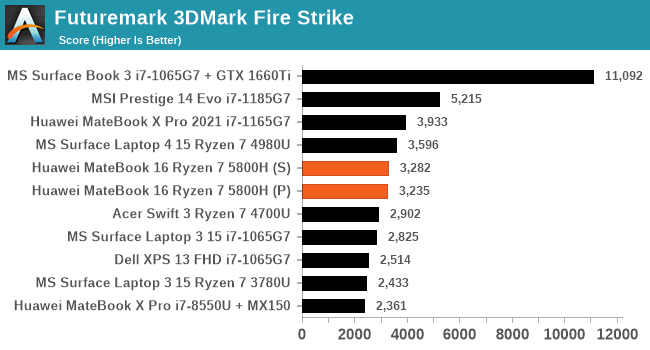
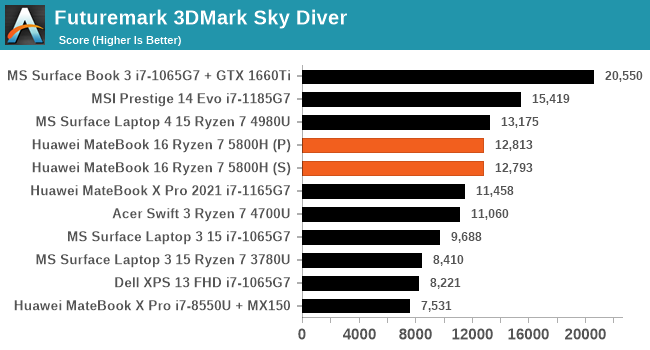
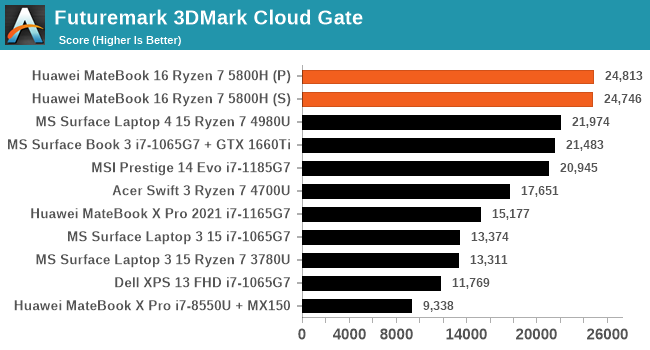
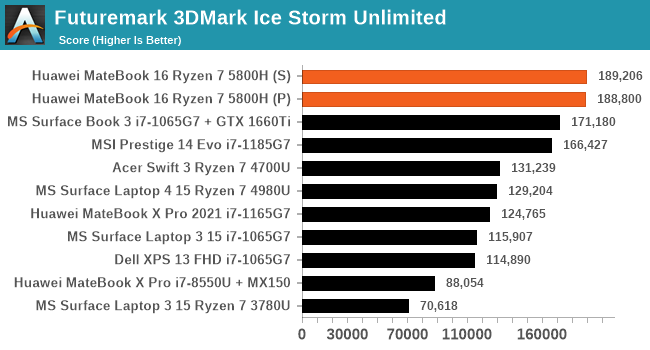
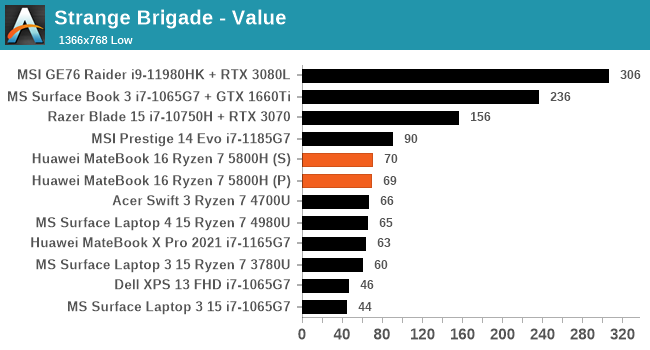
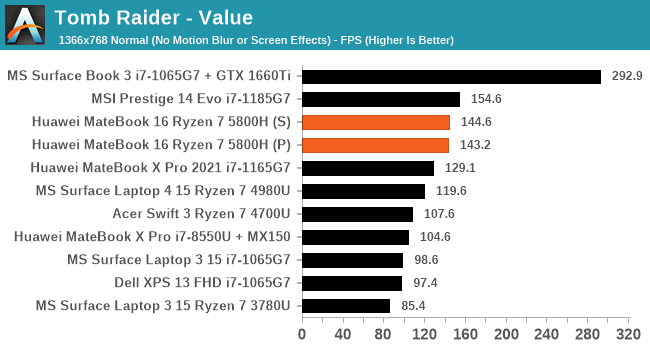

Overall we’re seeing small improvements compared to Zen 2 processors with integrated graphics, however the Vega 8 solution still sits behind the Intel Core i7-1185G7, which is usually equipped with LPDDR4X.










87 Comments
View All Comments
EasyListening - Friday, October 22, 2021 - link
You are asking for such a thing while supply chains are completely screwed.GreenReaper - Saturday, October 23, 2021 - link
If you don't ask, you never get.abufrejoval - Wednesday, October 20, 2021 - link
I also see the lack of RAM expandability as the key issue.I have a Lenovo Slim 7 13ACN05 and with all eight cores at 15 Watts it's not really able to pull ahead of a quad core Tiger Lake i7-1165G7 NUC I operate at the same Wattage in 'normal' workloads (say compile jobs, Ansible scripts, juggling VMs etc.), because it needs to downclock too much to sustain the 15 Watt power envelope. It's also maxed out at 16GB for RAM, even a single soldered module seems impossible with an Ultrabook form factor.
64GB in two SO-DIMMs make the NUC quite reasonable machines for light server workloads and I'd sure pay a little extra to include a "KVM", a "UPS" etc. to make it a notebook like this.
At 35-65 Watts an octa Ryzen really pulls ahead of all things Intel quad or hexa in the same wattage rage, but without RAM to expand it's all for naught. With this chassis size replacable RAM should be no issue so it's really sad they go "Apple" there.
While the Tiger Lake Xe 96 EU and Vega 8 iGPUs at 50GB/s offer impressive improvements over plain old "HD", Iris Plus or Kaveri, machine learning and gaming just require completely different classes of hardware, so I'd be happy to sacrifice a bit of DRAM bandwidth and latency for capacity in such a machine.
The Lenovo puts a Windows Hello compatible Webcam in such a small frame on the 16:10 2560x1600 display, I really don't see the point of a snot-cam.
dontlistentome - Wednesday, October 20, 2021 - link
Think yourself lucky you get the option of 16GB, in the UK they only sell the 8GB models.abufrejoval - Thursday, October 21, 2021 - link
I do feel lucky to have the device, because it's generally a well built marvel.But Lenovo is also lucky to have at least offered 16GB, because at 8GB they would have lost that sale for sure.
But I surely would have paid 200% RAM market price for 32 or 64GB.
anandcx - Wednesday, October 20, 2021 - link
@Ian: You missed the LG Gram 16 in comparison, it weighs just 1.19 KG according to LG but i measured my Gram 16 at 1.15 KG. It has 350 nits screen, better keyboard and touchpad and also costs lesser than the 17 inch version. Honestly it is the best laptop in that segment. Hopefully you can review it and it may even work for your personal use.Prestissimo - Wednesday, October 20, 2021 - link
Matebook seems really overpriced for what they're offering. I'll take LG Gram 17 any day over this as someone who doesn't need power and just want a big screen on my laptop for watching movies and consuming content.If a laptop doesn't have a dGPU and weighs over 1.3 kg / 3 lbs, it's an immediate deal breaker. There is no need for a "Premium Ultrabook" to be that heavy.
TheinsanegamerN - Wednesday, October 20, 2021 - link
Big battery is a plenty good reason.anandcx - Wednesday, October 20, 2021 - link
Gram 16 has 80 Wh battery and weighs 1.1 KG. Gram 17 is 1.3 KG.TheinsanegamerN - Wednesday, October 20, 2021 - link
Gram 17 only has a 72wh batteryhttps://www.lg.com/us/laptops/lg-17Z990-RAAS8U1-ul...
Gram 16 has 80wh battery but cannot sustain high performance due to cooling limitations due to small heatsink and cooling paths. May as well compare a tablet to this machine.